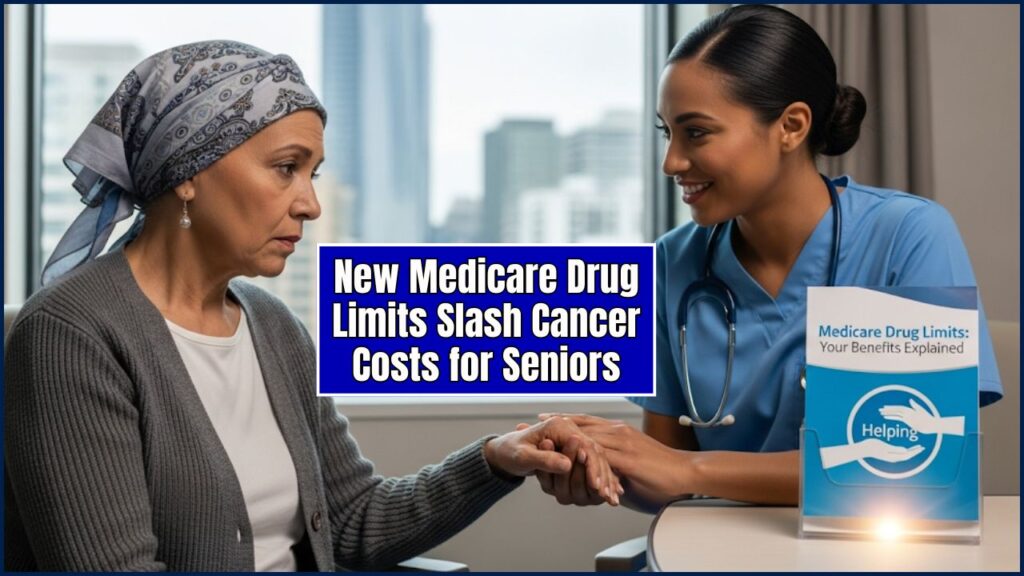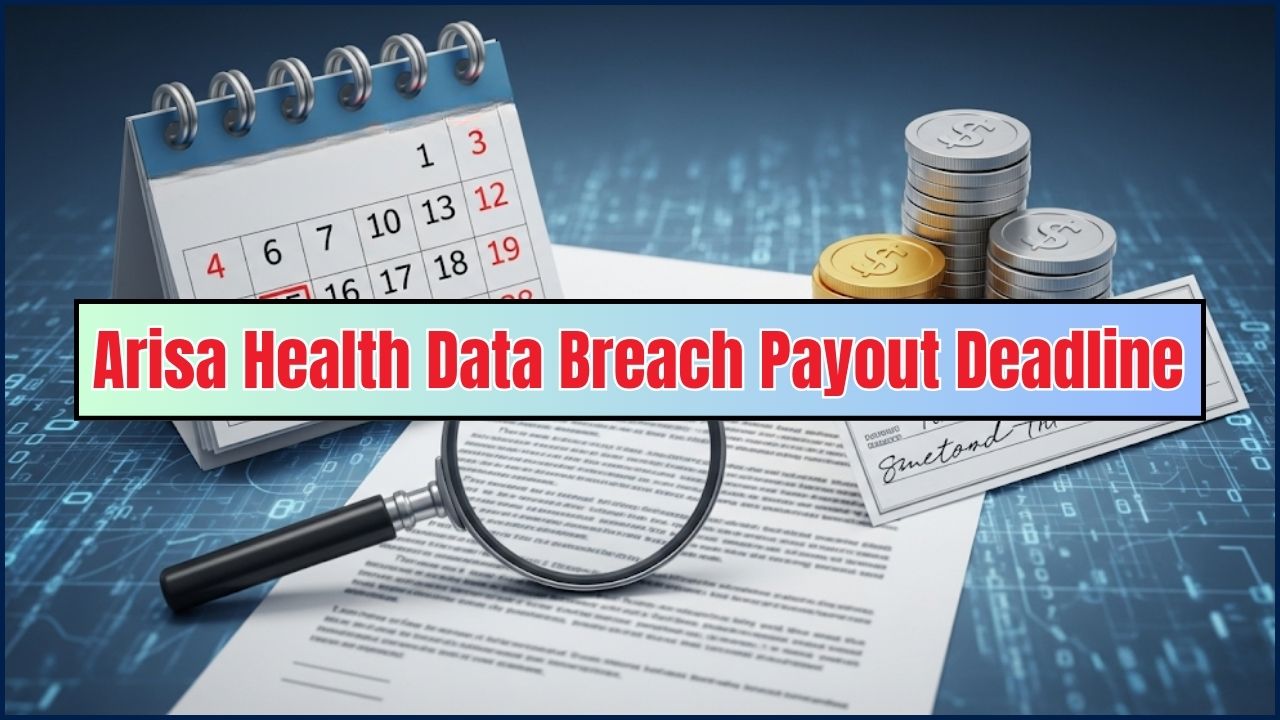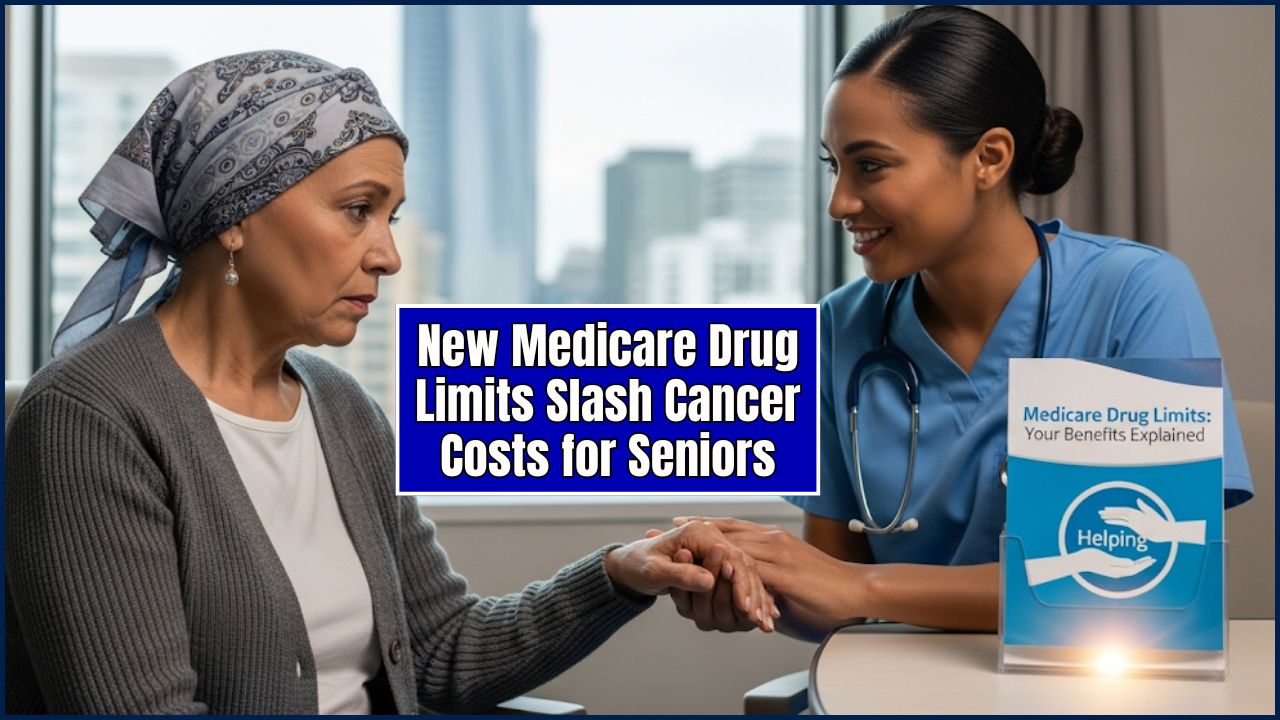When it comes to health care in the U.S., cancer drug costs have long been a major pain point, especially for seniors living on a fixed income. But a big shift is here. Starting January 1, 2025, new Medicare drug limits are finally making cancer treatment more affordable. Thanks to the Inflation Reduction Act, Medicare Part D enrollees will see life-changing savings on their prescription drugs, and that’s no small thing.

If you or a loved one relies on Medicare and has faced sky-high prices for cancer meds, you’re gonna want to sit down for this. This isn’t just another policy tweak — it’s a full-blown game-changer.
New Medicare Drug Limits Slash Cancer Costs for Seniors
| Key Change | Details |
|---|---|
| Out-of-Pocket Cap | $2,000 annual max for Medicare Part D drugs (starts 2025) |
| Old Cost for Oral Cancer Drugs | $11,000–$20,600 annually |
| New Savings Potential | Up to 90% reduction in annual costs |
| Monthly Payment Plan | Medicare Prescription Payment Plan lets you pay ~$167/month |
| Who Benefits | 11+ million Medicare Part D users, especially seniors with cancer |
| Official Info | Medicare.gov |
The new Medicare drug limits starting in 2025 are changing the way seniors afford cancer treatment. With an annual $2,000 cap, monthly payment plans, improved comparison tools, and drug negotiations on the horizon, this is a major win for patients and families. While the system isn’t perfect, it’s a huge step toward making care accessible and sustainable.
Why This Matters: The Cancer Cost Crisis
Cancer isn’t just a diagnosis — it’s a financial earthquake. For years, older adults on Medicare have shelled out thousands just to stay alive. Oral medications for conditions like leukemia, breast cancer, and prostate cancer could cost more than a new car every year.
That changes in 2025. With the $2,000 out-of-pocket cap on Medicare Part D drugs, seniors will no longer have to choose between groceries and chemo pills.
“We used to see patients abandon lifesaving meds due to upfront costs,” said Dr. Karen Conway, an oncologist in Denver. “Now, they can actually stick with their treatments.”
What Is Medicare Part D and Why Was It So Expensive Before?
Medicare Part D helps cover the cost of prescription drugs. Before 2025, it had a complicated structure that looked like this:
- Deductible Phase: You pay 100% until your deductible is met.
- Initial Coverage: You pay ~25% of drug costs.
- Coverage Gap (Donut Hole): You pay more after a spending threshold.
- Catastrophic Phase: You still pay 5% — but that adds up with expensive meds.
That 5% might sound small, but on a $15,000 drug, it’s still $750…every month. Not anymore.
What’s Changing in 2025
1. $2,000 Annual Cap on Part D Drug Costs
Once you hit $2,000 in out-of-pocket costs, Medicare covers the rest. Period. This applies to all Part D drugs, including oral cancer meds, which were some of the most expensive.
2. No More 5% Coinsurance in Catastrophic Phase
This often crushed patients financially. In 2025, it’s gone. Instead, Medicare handles a bigger share, and manufacturers cover 20% of costs at this level.
3. Monthly Payment Option: Medicare Prescription Payment Plan
Instead of paying $2,000 upfront, you can spread it out over 12 months. That’s around $167/month. Big relief for folks on fixed incomes.
Think of it like Netflix, but for meds that keep you alive.
4. More Transparency and Drug Comparison Tools
Medicare will improve online tools to help patients compare drug prices across pharmacies, promoting smarter spending.
5. Outreach and Enrollment Help for Seniors
New programs through local senior centers and pharmacies will offer guidance to help folks enroll in the payment plan or switch plans.
Real-Life Example: Jean’s Story
Jean, a 73-year-old from Arizona, was paying nearly $1,500/month for her leukemia medication. She hit the catastrophic phase by March every year. In 2025, she’ll only pay $2,000 total for the entire year — saving over $16,000. She’s already planning to use that extra cash to visit her grandkids more often.
Additional Real-Life Impact: Ramon’s Experience
Ramon, a 68-year-old retired teacher in Texas, delayed starting his multiple myeloma medication because of the high out-of-pocket costs. With the new cap, his treatment becomes affordable, and he finally feels hope again.
“This is the first time I feel like the system is working for me, not against me,” Ramon shared.
How to Prepare: What You Can Do Now
Step 1: Review Your Current Medicare Part D Plan
Go to Medicare Plan Finder and see how your drugs are covered.
Step 2: Talk to Your Pharmacist or Doctor
They can help you estimate how much you’ll save under the new cap.
Step 3: Enroll in the Medicare Prescription Payment Plan
Sign-ups start during Fall Open Enrollment (Oct 15–Dec 7, 2024). Mark your calendar!
Step 4: Use Free Counseling Resources
Programs like SHIP (State Health Insurance Assistance Program) offer free, personalized Medicare advice.
Who Benefits Most
This reform helps anyone on high-cost medications, especially:
- Seniors battling cancer (oral drugs like Imbruvica, Revlimid, Ibrance)
- People with chronic conditions (e.g., MS, rheumatoid arthritis)
- Low-to-middle income Medicare users
What’s Changed with Your Costs?
| Feature | Medicare Part D (Before 2025) | Medicare Part D (After 2025) |
| Annual Out-of-Pocket Cap | No cap. Patients paid 5% of all costs in the catastrophic phase. | $2,000 Cap. After reaching this amount, you pay nothing more. |
| Catastrophic Coverage Phase | Patients paid 5% coinsurance. | Eliminated. You pay $0 after hitting the cap. |
| Insulin Cost-Sharing | Costs could be hundreds of dollars. | $35 a month. A flat, predictable cost. |
| Adult Vaccines (e.g., Shingles) | Patients paid a portion of the cost. | $0. All recommended vaccines are now free. |
| Out-of-Pocket Payment Flexibility | Paid costs as they were incurred. | Optional monthly payment plan. Spread your costs over the year. |
Stats You Should Know
- 42% of Medicare beneficiaries previously abandoned meds due to cost. (Source: Penn Medicine)
- The cap could help over 11 million people annually. (Source: CMS)
- Expected annual savings per user: $600–$10,000+, depending on medications.
- 85% of seniors say prescription drug prices are too high. (Source: Kaiser Family Foundation)
FAQs
Does this cap apply to all cancer drugs?
Only Part D drugs. That includes most oral medications you pick up at the pharmacy. IV infusions (covered under Part B) are not included.
Will this impact Medicare premiums?
Possibly. Some experts predict slight increases, but far less than what most save in out-of-pocket costs.
What about drug price negotiations?
That’s happening too. Medicare will negotiate the prices of 25 high-cost drugs by 2027, further driving down costs.
Can I opt out of the monthly payment plan?
Yes. The plan is optional. But for many, it’s a budget-friendly lifesaver.
Where can I get help understanding my options?
Use SHIP or visit your local Area Agency on Aging. Also check out AARP Medicare Resources for updated guidance.
Final Thoughts: A Giant Leap for Health Equity
These Medicare changes don’t just save money — they save lives. For millions of seniors, $2,000 is still a lot, but it’s way better than $20,000. If you or someone you love is on Medicare, this is the time to get informed and plan ahead.












